In the last 70 years, agriculture has lost the majority of its workforce as generation after generation has turned away from family farming businesses. Despite this, agriculture has found ways to increase food production, with machines playing a key role.
But in 2020, the United Nations warned that agricultural productivity would need to increase by 60 per cent in order to feed the predicted global population in 2050. With big producers like the US still struggling to find agricultural labour, that demand simply can’t be met if farming doesn’t change how it operates.
“There’s still a massive gap between the labour that agriculture needs and the labour that agriculture has,” says Walt Duflock, vice president of innovation at Western Growers, a crop growers’ association covering the western US.
“So labour is a huge problem and automation’s the only solution to close the gap.”
This is why farmers are now swapping more traditional machinery for modern, AI-powered farming robots adept at some of the tasks that once required human hands.
The Naïo Oz Farming Assistant (see main picture), for instance, is designed for hoeing, weeding, making furrows, seeding and transporting. There are nearly 150 of these robotic farmhands in circulation across 48 countries.
Multipurpose machines
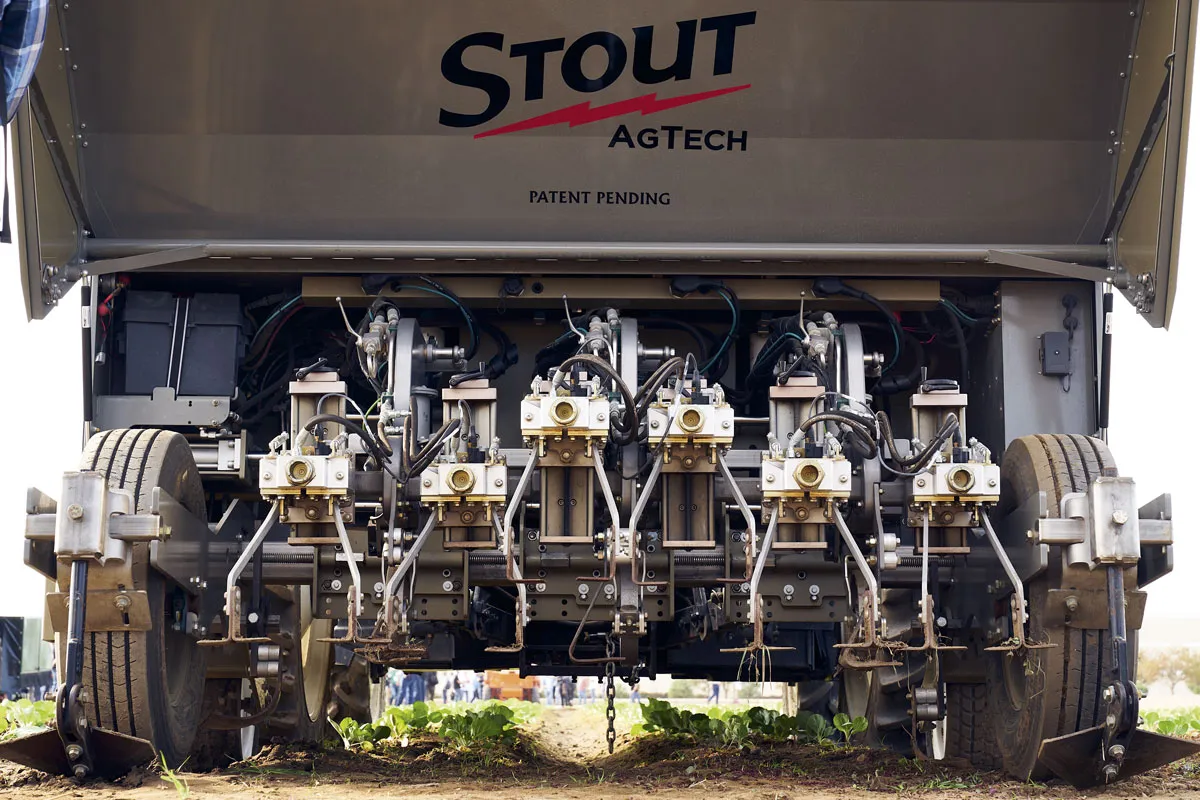
As well as an ever-increasing number of ‘AgTech’ start-ups, there are also more established manufacturers that have sold hundreds of robots, like Naïo (see above) and Burro, which makes helper robots for tasks like towing and carrying.
Stout Industrial Technology, which sold its first Smart Cultivator (pictured above) in 2020, is also heading in the same direction. The cultivator can be hitched to the back of a tractor, where it uses computer vision and artificial intelligence (AI) to precisely control mechanical blades as they turn over soil and eliminate weeds, while sparing crops. Stout’s approach is ‘software-defined’ – it builds multipurpose farming machines that will become more useful as the AI improves.
Read more:
- Vertical farming: Why stacking crops high could be the future of agriculture
- Could farming without soil help to solve our food crisis?
Field robotics expert Dr George Kantor, from Carnegie Mellon University in Pittsburgh, thinks this is the right approach, although not the simplest one.
“The easy way to do it is to build a special purpose machine for every application and then use intelligence to automate that machine, but of course there are thousands of different applications in agriculture and very few of them are big enough to build a business around,” he says.
“So you have to find ways of making the machine be applicable across tasks and across crops.”
Techno tractor
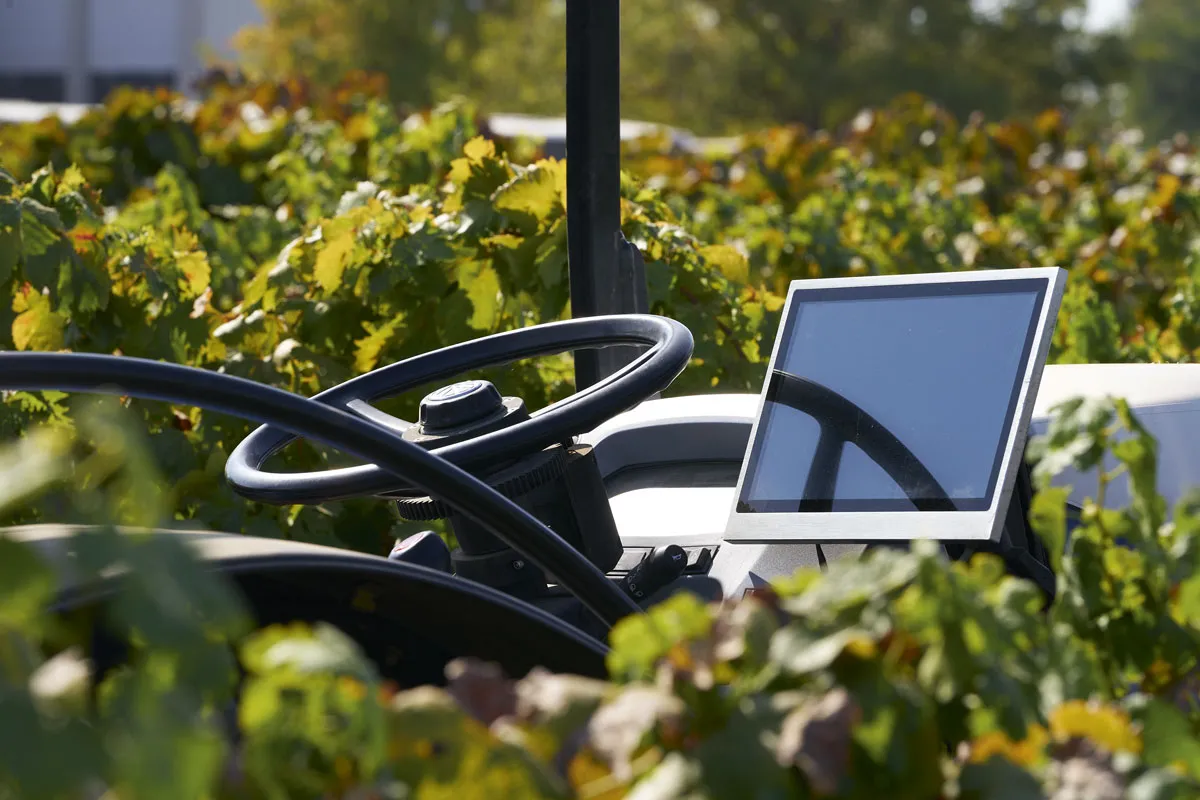
Tractors have been driving themselves for decades – John Deere developed a GPS-based self-guidance system in the early 2000s. But they haven’t generally been doing it unmanned.
“There’s always been a person in that tractor,” says Kantor. “It’s basically driving itself – the person is sitting there and they’re doing other things – but [the tractor] is not quite a robot.”
A new breed of autonomous tractors, however, is set to change that. Specifications for the Monarch Electric Tractor (pictured above) state that a driver is ‘optional’.
It’s battery-powered, with 360° cameras that can be accessed live by an operator via the software the manufacturer supplies. So now ‘driving’ a tractor is beginning to take on a whole new meaning, as we envisage farm workers managing whole fleets of vehicles without ever needing to lay their hands on a steering wheel.
Monarch claims operators can easily keep tabs on eight tractors at once via its Wingspan AI app, which provides maps and helpful data, such as distance covered and energy used.
Top of the range
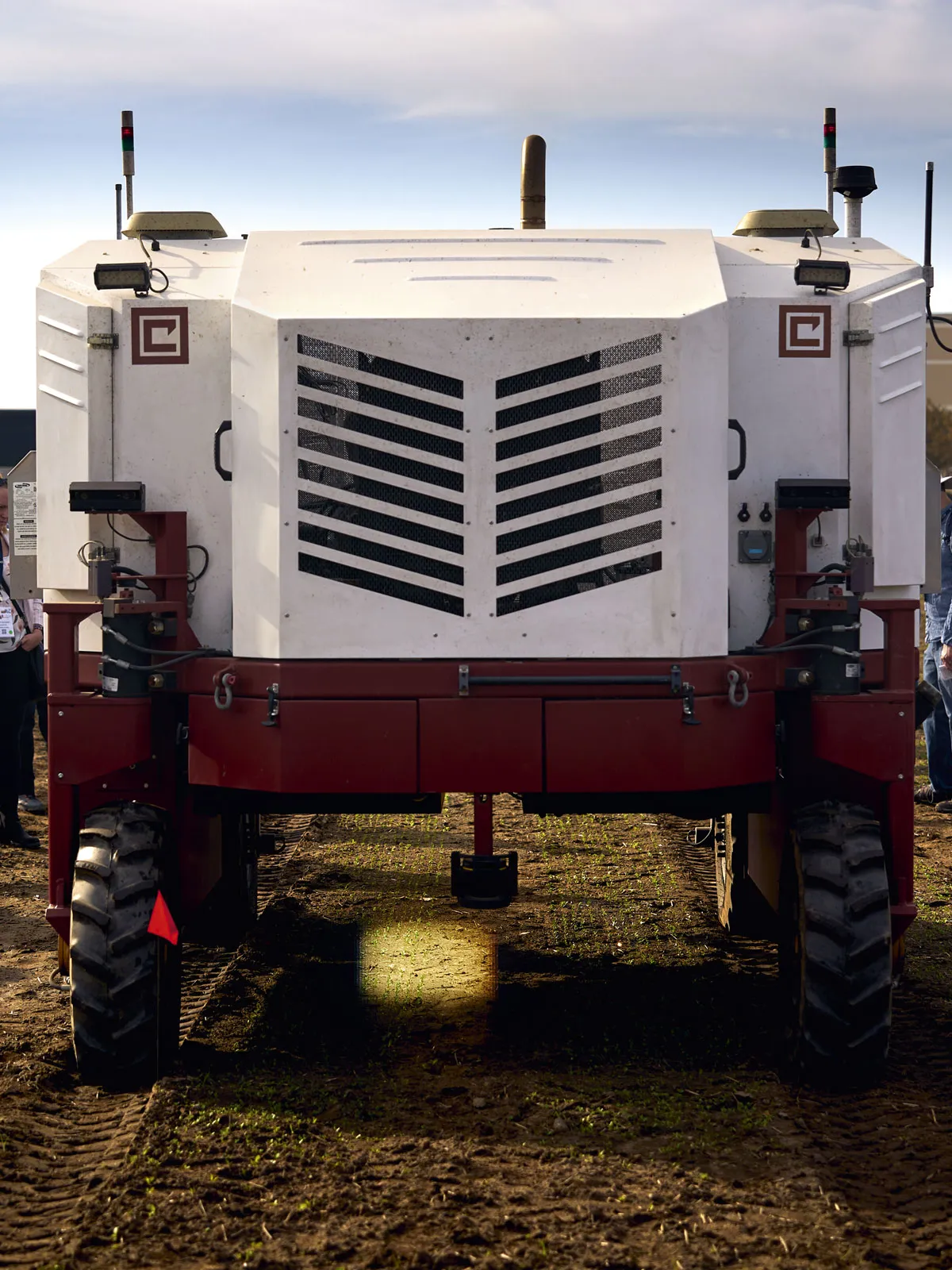
Why pull your weeds out of the ground by hand when you can have them zapped with pinpoint precision by a laser-wielding robot? Carbon Robotics’ Laserweeder uses high-resolution cameras and computer vision software to tell weeds from crops, then blasts them into submission.
While the demo version (pictured above) is an autonomous unit, the 2023 model comes in an ‘implement’ format that can be hooked up to a tractor.
At $1.4m (£1.2m approx), it doesn’t come cheap, but it can kill 200,000 weeds per hour. This makes it popular enough that there’s a year-long waiting list for orders, according to Duflock.
It’s simply a question of maths for growers, who are having to postpone their weeding because they can’t get the labour. “They run the maths against the crew,” he says. “And what they’re telling me is the breakeven on a couple of hundred acres looks to be two or three years.”
So while those with bigger operations – more like 5,000-10,000 acres (20-40km2) – are going to be the early adopters, once the technology is proven, smaller-scale growers are bound to jump on-board too.
Field of dreams
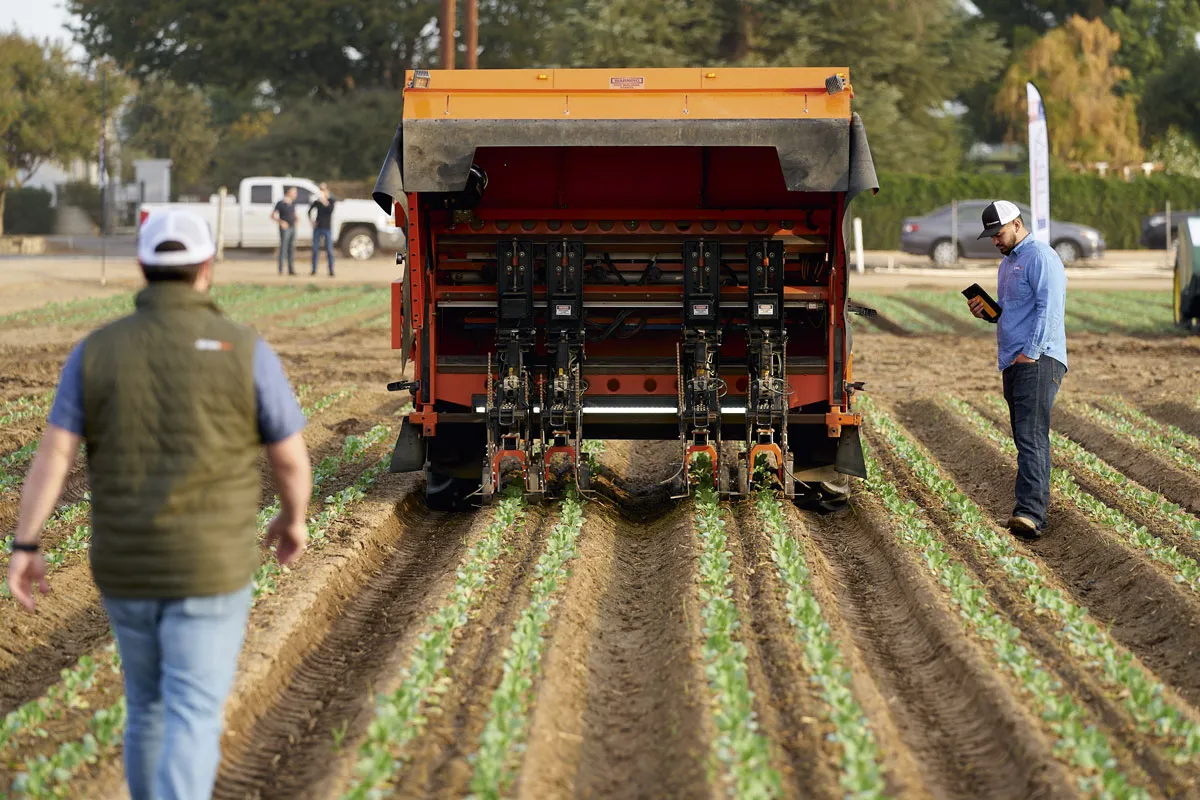
Weeding and thinning out of crops are some of the tasks that agricultural technology companies are starting to get a handle on.
According to Duflock, while harvesting might be causing more of a headache, new farming technologies will have these more straightforward applications ‘figured out’ within the next decade.
This will mean higher upfront costs for farms, but will also reduce reliance on temporary workers from other countries, which in the US comes with associated housing and transport costs under a government visa scheme.
But if cash-strapped farmers don’t have a cool million to lay out on a Laserweeder, then the Farmwise Titan FT35 Agtech Robot (above) offers a mechanical weed-killing solution suited to a tighter budget.
Combining a self-driving tractor and weeding attachment, it’s a hefty-looking robot but is still capable of precision weeding. It can also apply chemicals to kill weeds and pests.
Because lighting levels need to be optimum for sensing the weeds, the FT35 has a ‘skirt’ that can be raised and lowered to offer some level of control over the amount of light getting in.
Read more:
- How to start a farm under the sea
- Meet the autonomous Moon robots about to change space travel forever
Optimus vine
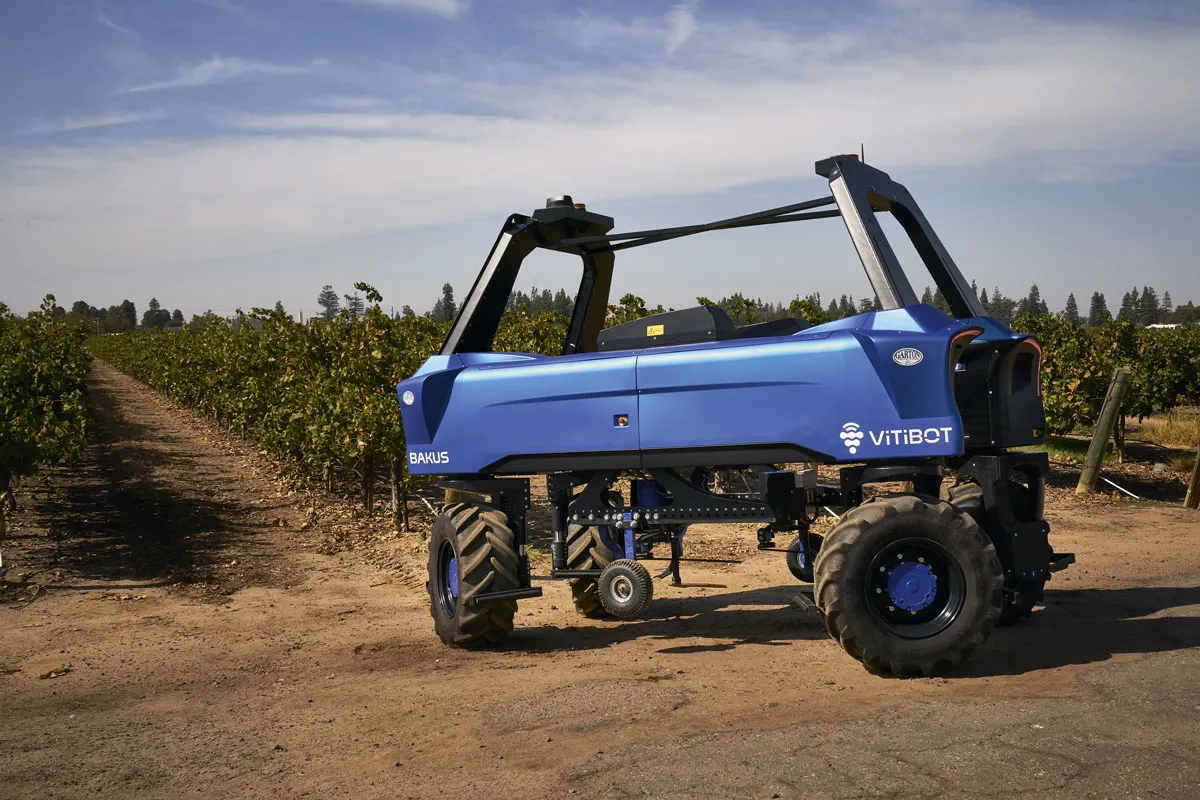
Vineyards present different challenges from other forms of farming, but agricultural robots like the Vitibot (pictured above) are specially designed to deal with at least some of them.
This autonomous electric robot trundles along each row, tilling the ground as it goes, but can also be fitted with tools for spraying, weeding and trimming.
Harvesting grapes is another matter. Grapes come in two varieties: wine grapes (which are crushed) and table grapes (which are eaten whole). For wine grapes, it’s already possible to buy robotic harvesters.
French company Pellenc sells one that wine producers have used to harvest their grapes, while Duflock says manufacturers will probably come up with service models that smaller growers can borrow to harvest their crops at lower cost.
Table grapes require a slightly gentler touch. As Kantor explains, human harvesters carry out a number of important tasks as they’re picking the grapes off the vine.
“They would cut a bunch off the vine, clean the cluster, make it the right shape and size, cut out the dead grapes and get the sticks out,” he says.
“You can imagine a robot that takes the cluster off the vine today, but I can’t imagine a robot that does that other really fine stuff – not any time soon.”
Safety first
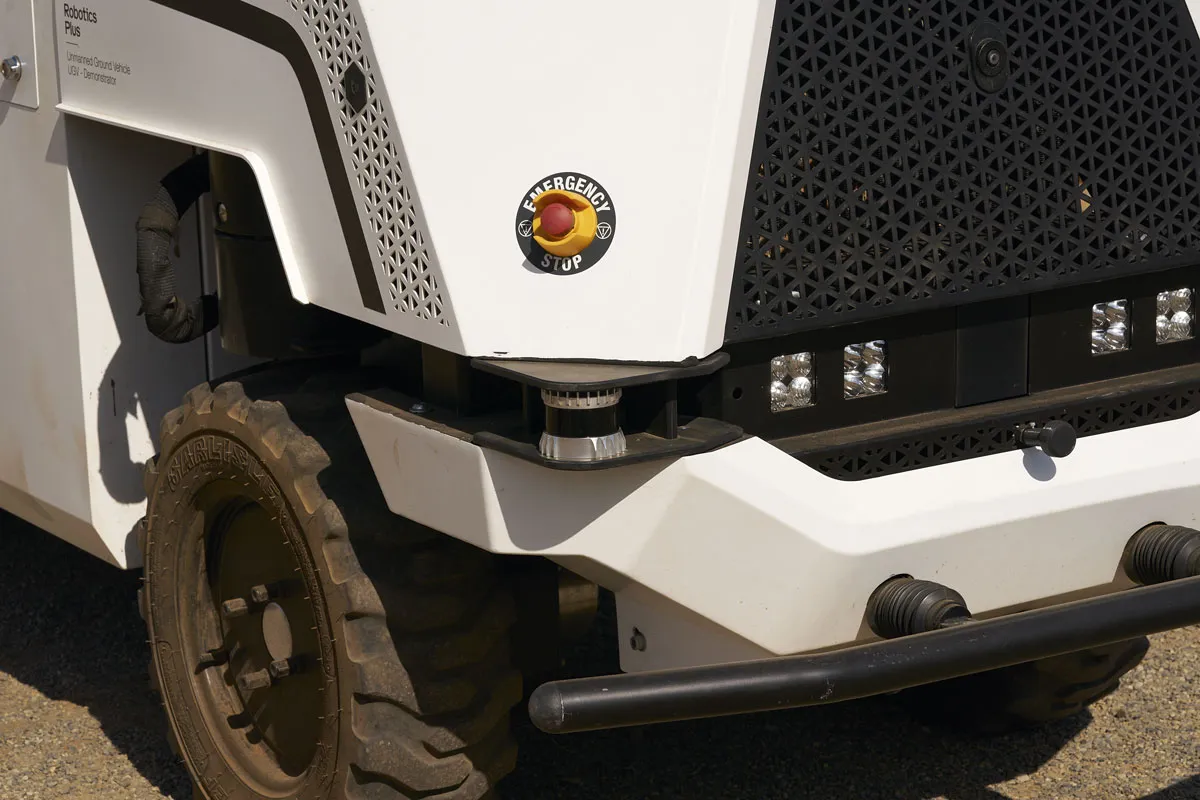
New farming technologies are not without risk. That’s why they’re built with safety features, like the emergency stop button (pictured above) on Robotics Plus’s tree and vine sprayer, or the ‘human detection’ system on Monarch’s electric tractor, which puts the brakes on when a person gets too close.
There are less obvious risks too. As agriculture becomes increasingly data-driven, companies are showing interest in aggregating all this new data.
While there are plenty of intelligent things we could do with massive agricultural datasets – like predicting the impacts of climate change on crop growth – there are also concerns it could be exploited, for instance, by insurers who set the premiums for crop losses or flood damage.
Though Duflock notes that if farmers “get smart enough” and share their data safely, they could use it as an additional revenue stream.
Meanwhile, concerns about robots taking our jobs may be unfounded in an industry that is desperately short of labour – in fact, they may create fewer but more highly skilled, better-paid jobs.
“In 10 years, I do think immigrant farm labour will still be a huge factor on the farm,” Duflock says.
“But I think there’ll be a lot of robots that enable those workers to do more things that are valuable.”
About our expert, Dr George Kantor
George Kantor is a research professor at the Robotics Institute at Carnegie Mellon University, Pittsburgh. There he researches autonomous robots, including mining and farming robots. He has delivered papers at the International Conference On Robotics And Automation and the AI For Agriculture And Food Systems conference.
Read more: